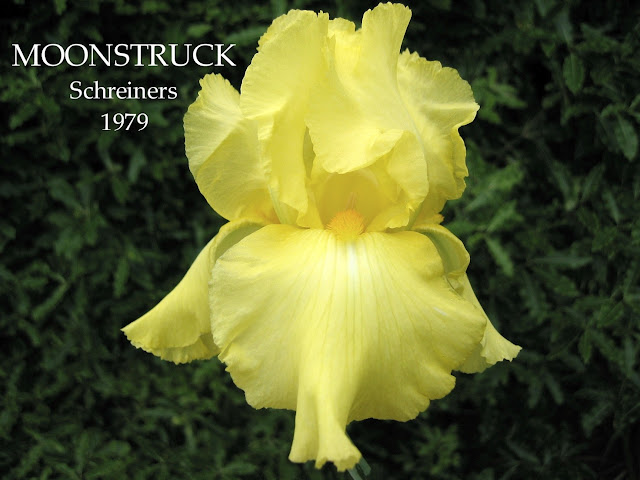 |
| Iris 'Irwell Angels Dream' |
ACCENT ON IRIS FLOWER SHOW
Burrell Creek Hall, The Bucketts Way
Burrell Creek, New South Wales
17 km’s from the Taree Service Centre or 17 km’s north of
Krambach.
19th October, 2013
Saturday 10 am to 3 pm
Quality Iris on Display and For Sale, also Daylilies and Fresh
Flowers
Light Refreshments available
Do consider entering the flower show.You may win a prize for your
effort,
or, just add to the days Spring display!
The Show Schedule is on the website, or contact Lyz to receive
one.
Entry Cost: $3.00
KINSPIRIT IRIS & DAYLILY FARM
Phone 6559 1275

THE IRIS SOCIETY OF AUSTRALIA
NEW SOUTH WALES REGION
2013 IRIS SHOW
Wentworth Falls School of Art Hall
Great Western Highway, Wentworth Falls (near railway station)
October 26th, 2013
Saturday 9.00 am.to 4.00 pm.
All entries to be displayed on Friday, 25th October for judging
that afternoon
Potted Iris, Rhizomes, Seeds, Craft Items, Cottage Plants for
Sale,
Cultural Information, Lunch and Teas available
Admission $5 (Concessions for seniors) Children under 16 free
Wheelchair access
Information: 02 47842727
Email: dicoxiris@bigpond.com
MORRINSVILLE HORTICULTURE SOCIETY ROSE & IRIS SHOW
Campbell Hall, Knox Presbyterian Church Hall, Canada St,
Morrinsville
Friday, 1st November, 2013.
Entries at the hall on the morning of the day
Open to Public: 12 noon to 4:00 p.m.
Inquiries: Jan Kerkin
Ph: (07) 889 3607
Email: jan@kerkin.co.nz
HOBART HORTICULTURAL SOCIETY INC. ROSE, IRIS & FLORAL ART SHOW
Hobart Town Hall – 50 Macquarie Street, Hobart (opposite the
GPO)
1st and 2nd November, 2013
Friday 1.00 - 6.00 pm. Saturday 10.00 am - 4.30 pm.
Please come along on Thursday night or Friday morning to enter
some exhibits in the novice section.
There is no cost to entering any of these shows. New exhibitors
desperately needed.
Tubes and vases can be provided or you can use clean green bottles
if you have them.
Other iris members are present on Thursday night to help show you
how to display your irises.
Admission is free

POVERTY BAY HORTICULTURAL SOCIETY ROSE & IRIS SHOW
Showgrounds Park and Events Centre, Gisborne
2nd & 3rd November 2013
Saturday 1.30 - 4.00 pm. Sunday 9.30 am - 3.30pm.
Entry fee is $5 adults, children free.
For further details contact the Show Secretary, Jill Coates, 06
8631310.
RANGITIKEI IRIS SHOW 2013
Palmerston North Leisure Centre, 569 Ferguson Street.
2nd & 3rd November 2013
Saturday 1.00 - 4.00 pm. Sunday 10.00 am - 4.00pm.
Public welcome to exhibit at 10am on Saturday.
Free to exhibit and free admission.
Sales tables with over 300 plants, and raffles.
Contact Julie 06 3579925.
MASTERTON HORTICULTURAL SOCIETY 2013 IRIS SHOW
Young Citizens Hall, Chapel Street, Kuripuni, Masterton
Saturday, 2nd November 2013 1pm-4pm,
Display of Irises, Plant Sales, and Christmas Raffle
Admission $2.00
New rule ; To continue exhibiting after the first year you must pay $10.00 fee and become a member.
HUTT VALLEY HORTICULTURAL SOCIETY EARLY SUMMER SHOW
Horticultural Hall, Laings Rd, Lower Hutt
9th, & 10th November, 2013
Saturday 12.00pm. - 4.30 pm. Sunday 10.00 am - 4pm.
All entries must be received by 9.30 am on Saturday morning of the
show
Judging commences at 10.30 am sharp
Entry fee is $2.50 adults, members & children free.
For further details contact the Secretary (04) 479 5548
MARTINBOROUGH ROSE & IRIS SHOW
Martinborough Town Hall,
Saturday 9th November 2013
12.00 noon until 4.00pm
Everyone is encouraged to enter their blooms.
Admission Gold coin Donation
We encourage everyone to enter their blooms.
We encourage everyone to enter their blooms.
For a Show Schedule and All Inquiries
Contact Maree Roy (06) 3069319 or Yvonne Harvey (06) 3069553
HAWERA AUTO COURT EGMONT A & P ASSOCIATION SUMMER SHOW
Showgrounds, Burnside Avenue, Hawera
15th & 16th November 2012
Home Industries including Iris and Flower Show, Cattle,
Equestrian, Dog Trial, Tractor Pull, Kidzone.
NELSON HORTICULTURAL SOCIETY ROSE AND IRIS SHOW 2013
The Nelson Horticultural Society Inc. are holding their Rose and Iris Show
Sunday 17th November 2013 at the at the Granary, Founders Park, Nelson
From 10.00 am -5 pm. Entry $5 adults, children free.
TIMARU HORTICULTURAL SOCIETY EARLY SUMMER SHOW
Caroline Bay Hall, Timaru.
16th & 17th November, 2013
Saturday 2.00 - 5.00 pm. Sunday 11.00am - 4.30pm.
Irises, Roses, cut flowers, container plants, orchids, alpine and
rock garden plants, bonsai, floral art, fruit and vegetables.
Braggers Corner for large or unusual vegetables and plants
Admission $3.00 adults, or a membership ticket, children free.
For further details contact the Secretary, Ted Falvey (03) 684
3760
The above is a list of Australian and New Zealand 2013 Iris Shows
to date. If you require a show schedule or times to stage your
blooms please do not hesitate to contact the Show Secretary's
listed above. This post will be updated when I am notified of more
shows. If you have a show you would like to add to the list leave
details as a comment.
Read More



























